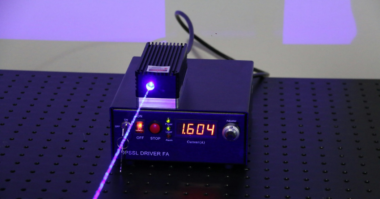Stan Riddle, VibrAlign
In our shaft alignment training classes, we typically see some coupling inserts that are well past their prime. In many of these instances, mechanics were not quite sure when a coupling insert (or an entire coupling) should be replaced. So let’s look at some common coupling types, and discuss when replacement should be needed.
But before we do, it’s important to note that coupling inserts are meant to be the “weak link” in most power transmission systems. That is to say the coupling insert should be designed to fail before damage can be caused to other components. Machine design engineers should also choose a coupling type which can handle the required start-up torque, transfer power for the necessary period of time, and lend itself to quick replacement when needed. Couplings should also be tolerant of minimal amounts of misalignment.
 Jaw-type couplings (often called “spiders”) have been around for many years. They are inexpensive, do not require lubrication, and have a good ratio of horsepower to diameter. For maximum life, they do require precision alignment, and proper axial spacing.
Jaw-type couplings (often called “spiders”) have been around for many years. They are inexpensive, do not require lubrication, and have a good ratio of horsepower to diameter. For maximum life, they do require precision alignment, and proper axial spacing.
The most common failure mode for this type of coupling is damaged or missing “legs”, as shown in the photo. But they can be susceptible to cracking before this type of failure occurs. Since they can be obtained in many different types of materials, it is advisable to work with your distributor, to get the best insert type for your application.
A visual inspection of the spider is recommended to minimize the risk of unexpected failure. When these inserts fail catastrophically, the hub jaws will continue to transmit power for a short time.
 S-Flex couplings are another very common type of coupling insert, sharing many of the same characteristics as jaw couplings. Two of the most common failure modes are:
S-Flex couplings are another very common type of coupling insert, sharing many of the same characteristics as jaw couplings. Two of the most common failure modes are:
- “shearing”, as shown in this photo. This is normally caused by either misalignment, improper axial spacing, or both.
- “twisting”, where the insert twists over time, normally due to both start-up and running torque.
A regular inspection for these two types of coupling damage is recommended.
 “Clamshell” type elastomeric couplings have a very effective horsepower/diameter ratio. While the couplings can tolerate misalignment, their stiffness means that misalignment forces can cause excessive loading of bearings and seals. Precision alignment is recommended. These couplings can also be specified with different materials, depending on load and temperature. Accurate axial spacing is recommended. Damage on this coupling type is usually noted by torsional cracking of the elastomer.
“Clamshell” type elastomeric couplings have a very effective horsepower/diameter ratio. While the couplings can tolerate misalignment, their stiffness means that misalignment forces can cause excessive loading of bearings and seals. Precision alignment is recommended. These couplings can also be specified with different materials, depending on load and temperature. Accurate axial spacing is recommended. Damage on this coupling type is usually noted by torsional cracking of the elastomer.
 Grid couplings do require lubrication, and are generally tolerant of slight misalignment. As well as precision alignment and proper axial spacing, these couplings do require occasional lubrication (using the recommended grease type) and inspection.
Grid couplings do require lubrication, and are generally tolerant of slight misalignment. As well as precision alignment and proper axial spacing, these couplings do require occasional lubrication (using the recommended grease type) and inspection.
Inspections should also include a visual inspection of the grid, looking for indentations or cracking, and inspection of the hub teeth for wear. Excessive misalignment or improper axial spacing of this coupling can cause the grid to break.
It should be noted that, for most flexible couplings, the manufacturer’s maximum allowable misalignment value is the maximum misalignment the coupling can tolerate before catastrophic failure occurs, not the amount it should be aligned to. Precision alignment is recommended for any coupling.




Comments